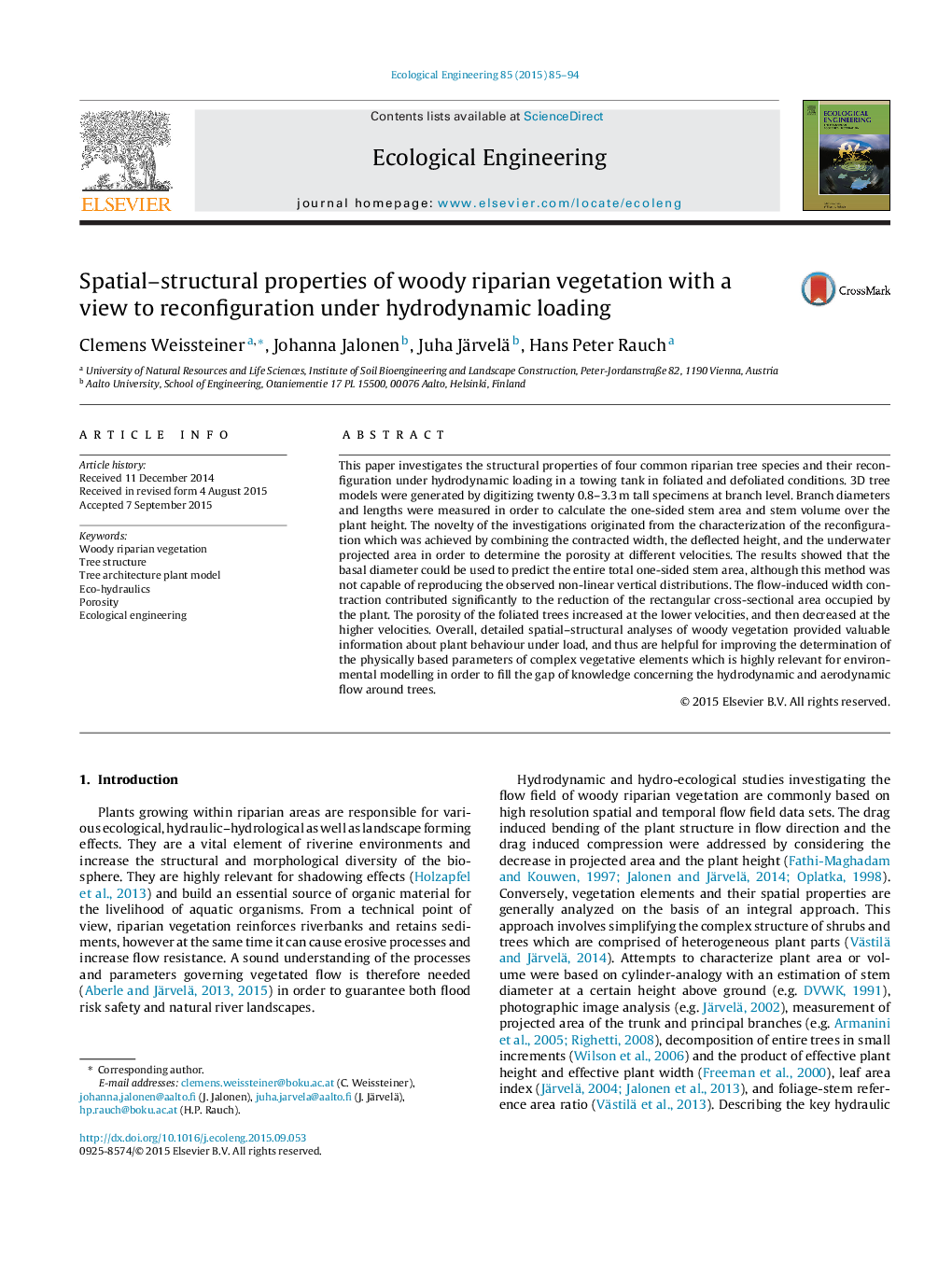| Article ID | Journal | Published Year | Pages | File Type |
|---|---|---|---|---|
| 6301591 | Ecological Engineering | 2015 | 10 Pages |
Abstract
This paper investigates the structural properties of four common riparian tree species and their reconfiguration under hydrodynamic loading in a towing tank in foliated and defoliated conditions. 3D tree models were generated by digitizing twenty 0.8-3.3Â m tall specimens at branch level. Branch diameters and lengths were measured in order to calculate the one-sided stem area and stem volume over the plant height. The novelty of the investigations originated from the characterization of the reconfiguration which was achieved by combining the contracted width, the deflected height, and the underwater projected area in order to determine the porosity at different velocities. The results showed that the basal diameter could be used to predict the entire total one-sided stem area, although this method was not capable of reproducing the observed non-linear vertical distributions. The flow-induced width contraction contributed significantly to the reduction of the rectangular cross-sectional area occupied by the plant. The porosity of the foliated trees increased at the lower velocities, and then decreased at the higher velocities. Overall, detailed spatial-structural analyses of woody vegetation provided valuable information about plant behaviour under load, and thus are helpful for improving the determination of the physically based parameters of complex vegetative elements which is highly relevant for environmental modelling in order to fill the gap of knowledge concerning the hydrodynamic and aerodynamic flow around trees.
Related Topics
Life Sciences
Agricultural and Biological Sciences
Ecology, Evolution, Behavior and Systematics
Authors
Clemens Weissteiner, Johanna Jalonen, Juha Järvelä, Hans Peter Rauch,
